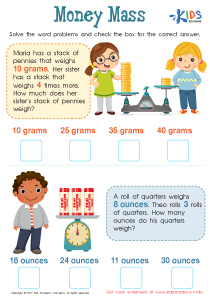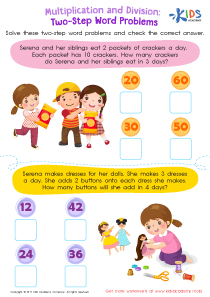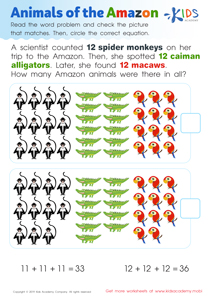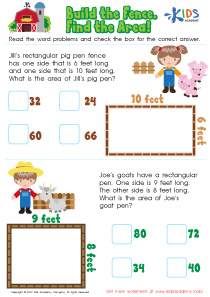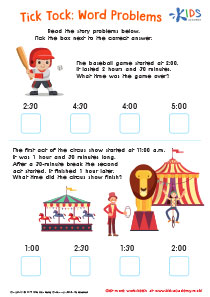Extra Challenge Length and Mass Word Problems Worksheets for Ages 8-9
1 filtered results
-
From - To
Introducing our Extra Challenge Length and Mass Word Problems worksheets, expertly designed for children aged 8-9 years. These school worksheets offer an enriching blend of length and mass measurement challenges tailored to enhance mathematical skills and conceptual understanding. Each problem encourages critical thinking and practical application, making learning engaging and effective. Ideal for classroom use or at-home reinforcement, these worksheets are the perfect tool to elevate your child's mastery of math fundamentals. Dive into our collection and watch your child grow in confidence and ability with each problem solved!


Length Word Problems Worksheet
The Value of Extra Challenge Worksheets on Length and Mass Word Problems for Children Aged 8-9 Years
In the journey of education, particularly for children aged 8-9 years, understanding the concepts of length and mass is not just about learning measurements but about developing critical thinking and problem-solving skills. Extra Challenge worksheets on Length and Mass Word Problems serve as a significant educational tool, tailored to enhance these skills while aligning with school curricula. These school printables provide a structured platform for students to engage deeply with the subject matter, making learning both fun and impactful.
Enhancing Conceptual Understanding
One of the primary advantages of utilizing these worksheets is the deepened conceptual understanding they offer. At the ages of 8 and 9, children are at a crucial stage in their cognitive development. They are transitioning from concrete operational stages into more complex forms of thinking. Length and mass word problems require them to apply not just mathematical skills but also to read and comprehend what is being asked of them. This dual demand helps in strengthening their comprehension and mathematical abilities simultaneously.
Building Real-World Skills
The real world isn’t made up of straightforward questions and answers; it’s filled with complexities that require analytical thinking and problem-solving. Length and mass word problems on these worksheets mirror real-life scenarios, making them invaluable. For instance, a problem might involve figuring out the difference in length between two objects or calculating the total mass of items in a shopping list. These scenarios help children understand the practical application of what they learn, showing them the relevance of math in everyday life.
Boosting Confidence Through Challenges
Extra Challenge worksheets are designed to push children slightly beyond their comfort zones. By encountering and overcoming these academic challenges, children build confidence in their abilities. School printables that offer progressively challenging problems encourage children to think outside the box and develop a persistence that will benefit them in all areas of study.
Customizable Learning
The flexibility of these worksheets is another significant benefit. Teachers and parents can select worksheets based on the individual learning pace and level of each child, ensuring that they are neither too easy nor excessively challenging. This tailored approach helps in maintaining an optimal level of interest and engagement from the child, promoting better learning outcomes. Moreover, these school printables can be easily integrated into classroom lessons or used at home for additional practice, making them a versatile tool in the educational toolkit.
Encouraging Collaborative Learning
Often, these worksheets can be used to foster collaborative learning. Children can work in small groups or pairs to solve problems, discussing and debating different approaches and solutions. This not only helps them understand diverse methods of solving the same problem but also aids in developing their social skills and ability to work cooperatively. Such collaborative sessions turn learning into a more dynamic and interactive process, which is especially effective for children who thrive in group settings.
Stimulating Continuous Improvement
Extra Challenge worksheets on Length and Mass Word Problems are structured in a way that they can assess both the initial understanding of a child and their progress over time. This continual assessment helps in identifying areas where a student might be struggling, allowing teachers and parents to intervene early and provide the necessary support to help the child improve. Regular practice through these worksheets ensures a gradual and consistent reinforcement of concepts, which is vital for mastery of any subject.
Cultivating a Love for Math
Perhaps one of the most significant, yet overlooked, benefits of these worksheets is that they help cultivate a love for mathematics. By making math problems relatable and applicable to real life, and presenting them in an engaging manner, children begin to view math less as a chore and more as an interesting challenge. The satisfaction and excitement children experience from solving these problems can lead to a positive attitude towards math, encouraging them to explore the subject with enthusiasm.
Conclusion
In conclusion, Extra Challenge worksheets on Length and Mass Word Problems are an indispensable educational resource for children aged 8-9 years. They not only strengthen foundational mathematical and logical skills but also prepare children for real-world challenges. These school printables promote a deeper understanding, boost confidence, provide customizable learning opportunities, and foster a collaborative and enjoyable learning environment. By integrating these tools in educational practices at school and home, we can ensure that children not only achieve academic success but also develop a keen analytical mind and a lifelong appreciation for mathematics.

 Assign to the classroom
Assign to the classroom
